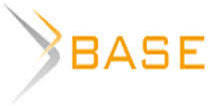Development of historical and anthropological knowledge about the Central Asian region in the Western Europe and USA
Strengthening of integration processes in the world, transformation of modern identity and the risk of losing "self", as well as a decrease in the sense of unity in a multiethnic society – all this gives rise to the need for scientific research on the study of identity. Today in the world there are several institutes and centers for the study of the identity of Uzbeks and other peoples of Central Asia. The questions of religious (Islamic) identity, gender relations, cultural heritage, Soviet policy in relation to local culture (REEI, IU Bloomington; IEAS, UC Berkeley; CEERES, UChicago (USA), etc.); issues of studying history, archeology, ethnology, anthropology, linguistics, migration processes of the peoples of Central Asia and the Caucasus (RSAA, Cambridge; SOAS, ULondon; SSS, UManchester (Great Britain), etc.); issues of Uzbek identity and identification, Islamic culture and identity, holy places, theoretical anthropology (Max Planck ISA (Germany)); and also some centers in Europe (ESCAS, CASCA) and the USA (CESS), etc. continue their research. The above scientific projects, which are aimed at researching the (national, ethnic) identity of Uzbeks, also show the relevance and importance of this topic on an international scale. The purpose of this article is to show the dynamics of the development of this knowledge in the West and the United States, focusing especially on the identity of the Uzbek people. According to foreign studies of the identity of Central Asian peoples, the development of scientific knowledge in this direction is divided into several stages. The reference point of the “symbolic” beginning of the study of the studied topic is the end of World War II, since most of the Western grants for the study of the Muslim world (region) and its identity began in the post-war period. The study of each period has its own reason, purpose and objectives, subject and methodology, features and results. The article briefly reveals the nature and characteristics of each period. At the end of the article, we will try to give our reasoning and conclusions on the selected problem.

















While nobody left any comments to this publication.
You can be first.
Abashin, S. N. (2014), “From editorial board”, Antropologicheskiy forum [Anthropological forum], 28, 137-140 (in Russ.).
Abramson, D. and Karimov, E. (2007), “Sacred Sites, Profane Ideologies: Religious Pilgrimage and the Uzbek State”, in Sahadeo, J. & Zanca, R. (eds), Everyday Life in Central Asia: Past and Present, Indiana University Press, Bloomington, IN, 319-338.
Adams, L. (1999), “Celebrating independence: arts, institutions, and identity in Uzbekistan”, Ph.D. Thesis, Sociology, University of California, Berkeley.
Adams, L. (1999), “Invention, institutionalization and renewal in Uzbekistan’s national culture”, European journal of cultural studies, 2 (3), 355-373.
Akbarzadeh, Sh. (1997), “The political shape of Central Asia”, Central Asian Survey, 16, (4), 517-542. (a)
Akbarzadeh, Sh. (1997), “A note on shifting identities in the Ferghana valley”, Central Asian Survey, 16 (1), 65-68. (b)
Akbarzadeh, Sh. and Saeed, A. (2003), Islam and political legitimacy, London: Routledge Curzon, UK.
Akiner, Sh. (1997), “Melting pot, salad bowl – cauldron? Manipulation and mobilization of ethnic and religious identities in Central Asia”, Ethnic and Racial Studies, 20 (2), 362-398.
Alexander, C. (2015), “The Anthropology of Central Asia”, International Encyclopedia of the Social and Behavioral Sciences, vol. 3, 2nd ed., Elsevier, Oxford, 316-322.
Askarov, M. (2020), “Book review. Mongolia: a political history of the land and its people”, Ethnic and Racial Studies, DOI: 10.1080/01419870.2020.1824002.
Askarov, M. (2020), “English-speaking anthropology on the nature of Uzbek identity in the late 19th – early 20th centuries”, Bulletin of Anthropology, 1 (49), DOI: 10.33876/2311-0546/2020-49-1/239-258 (in Russ.).
Askarov, M. M. (2019), “Analysis of categories of identity in the late 20th – early 21st centuries on the territory of modern Uzbekistan (based on English-language materials)”, Research Result. Social Studies and Humanities, 5 (4), 62-77, DOI: 10.18413/2408-932X-2019-5-4-0-6 (in Russ.).
Bayburin, A. (2004), “Editor’s Note”, Antropologicheskiy forum, 1, 96-97 (in Russ.).
Bennigsen, A. (1971), “Islamic or local consciousness among Soviet Muslims”, in Allworth, E. (ed.), Soviet Nationality Problems, Columbia University Press, New York.
Bennigsen, A. (1972), “The Muslims of European Russian and the Caucasus”, in Vucinich, W. (ed.), Russia and Asia: Essays on the influence of Russia on the Asian Peoples, Hoover Institute Press, Stanford, CA.
Bennigsen, A. (1975), “Islam in the Soviet Union: The religious factor and the nationality problem”, in Bociurkiw, B. and Strong, J. (eds), Religion and Atheism in the USSR and Eastern Europe, Macmillan, London, UK.
Bennigsen, A. (1977), “Modernisation and conservatism in Soviet Islam”, in Dunn, D. (ed.), Religion and Modernization in the Soviet Union, Westview, Boulder, CO.
Bennigsen, A. (1978), “Islam in the Soviet Union: Religious and national problems”, Religion and Atheism in the USSR and Eastern Europe, Carleton University Press, Ottawa.
Bennigsen, A. and Broxup, M. (1982), The Islamic Threat to the Soviet State, Croom Helm, London, UK.
Bennigsen, A. and Lemercier-Quelquejay, C. (1979), “‘Official’ Islam in the Soviet Union”, Religion in Communist Lands, 7 (III), 148-159. (a)
Bennigsen, A. and Wimbush, S. (1979), Muslim National Communism in the Soviet Union: a Revolutionary Strategy for the Colonial World, Chicago University Press, Chicago.
Bennigsen, A. and Wimbush, S. (1985), Muslims of the Soviet Empire, Hurst, London, UK.
Carrère d’Encausse, H. (1974), “Islam in the Soviet Union: Attempts at Modernisation”, Religion in Communist Lands, 2 (4-5), 12-20.
Chari, S. and Verdery, K. (2009), “Thinking between the posts: postcolonialism, postsocialism, and ethnography after the Cold War”, Comp. Stud. Soc. History, 51 (6), 6-34.
Doi, M. M. (2002), Gesture, Gender, Nation. Dance and Social Change in Uzbekistan, Bergin & Garvey, London, UK.
Edgar, A. (2004), Tribal Nation: The Making of Soviet Turkmenistan, Princeton University Press, Princeton, NJ.
Edgar, A. (2006), “Bolshevism, Patriarchy, and the Nation: The Soviet ‘Emancipation’ of Muslim Women in Pan-Islamic Perspective”, Slavic Review, 65.
Esenova, S. (2002), “Soviet Nationality, Identity, and Ethnicity in Central Asia: Historic Narratives and Kazakh Ethnic Identity”, Journal of Muslim Minority Affairs, 22 (1), 11-38.
Ferrando, O. (2008), “Manipulating the Census: Ethnic Minorities in the Nationalizing States of Central Asia”, Nationalities Papers, 36 (3), 489-520.
Ferrando, O. (2011), “Soviet population transfers and interethnic relations in Tajikistan: assessing the concept of ethnicity”, Central Asian Survey, 30 (1), 39-52.
Fierman, W. (2004), “On Uzbek ‘Nationalization’”, Anthropology & Archeology of Eurasia, 44 (4), 80-85.
Fierman, W. (2006), “Language and education in post-Soviet Kazakhstan: Kazakh-medium instruction in urban schools”, The Russian Review, 65 (1), 98-116.
Fierman, W. (2009) “Identity, Symbolism, and the Politics of Language in Central Asia”, Europe-Asia Studies, 61 (7), 1207-1228.
Gorshenina, S. (2016), “‘Central Asia’: No More Than a ‘Label’ for a Complex Historical and Cultural Region with Changing Borders”, Antropologicheskiy forum [Anthropological forum], 28, 40-47 (in Russ.).
Hanson, S. (2004), “Central Asia and the Caucasus in the Contemporary Social Sciences”, Social Science Research Council Items and Issues, 5 (1-2), 20-21.
Hierman, B. (2015), “Central Asian Ethnicity Compared: Evaluating the Contemporary Social Salience of Uzbek Identity in Kyrgyzstan and Tajikistan”, Europe-Asia Studies, 67 (4), 519-539.
Hirsch, F. (2005), Empire of Nations: Ethnographic Knowledge and the Making of the Soviet Union, Cornell University Press, Ithaca.
Iban'yez-Tirado, D. and Marsden, M. (2016), “Anthropological Studies of Central Asia in Western Science”, Antropologicheskiy forum [Anthropological forum], 28, 51-52 (in Russ.).
Kamp, M. (2006), The new woman in Uzbekistan: Islam, modernity, and unveiling under communism, University of Washington Press, USA.
Kamp, M. (2014), “Women-initiated unveiling: state-led campaigns in Uzbekistan and Azerbaijan”, Anti-veiling campaigns in the Muslim World, in Cronin, S. (ed.), Routledge, London and New York.
Kandiyoti, D. (2007), “The politics of gender and the Soviet paradox: neither colonized, nor modern?”, Central Asian Survey, 26 (4).
Khalid, A. (2007), Islam after Communism: Religion and Politics in Central Asia, University of California Press, Berkley.
Khalid, A. (2015), Making Uzbekistan: nation, empire, and revolution in the early USSR, Cornell University Press, Ithaca and London, Greece and UK.
Khalid, A. (2017), “The Roots of Uzbekistan: Nation making in the early Soviet Union”, Uzbekistan: political order, societal changes, and cultural transformations, in Laruelle, M. (ed.), The George Washington University, Washington, D.C., 1-5.
Khodzhaev, A. (2004), Chinese factor in Central Asia. Publishing house “Fan” of the Academy of Sciences of the Republic of Uzbekistan, Tashkent, Uzbekistan (in Russ.).
Laruelle, M. (2016), The Nation narrated: Uzbekistan’s Political and cultural nationalism, London; New York.
Liu, M. (2011), “Central Asia in the Post-Cold War World”, Annual Review of Anthropology, 40, 115-131.
Liu, M. (2003), “Detours from utopia on the Silk Road: ethical dilemmas of neoliberal triumphalism”, Central Eurasian Studies Review, 2 (2).
Lobacheva, N. (1997), “On the History of the Paranja”, Anthropology & Archeology of Eurasia, 36, 2, 63-90.
Marsden, M. (2012), “Southwest and Central Asia: Comparison, Integration or Beyond?”, The SAGE Handbook of Social Anthropology, in Fardon, R. et al. (eds), Sage, London, 340-365.
Megoran, N. (2011), “Theorizing gender, ethnicity and the nation-state in Central Asia”, Central Asian Survey, 18 (1).
Mesbahi, M. (1994), Central Asia and the Caucasus After the Soviet Union: Domestic and International Dynamics, Gainesville, University of Florida Press, FA.
Min Pun (2019), “The East-West Dichotomy: From Orientalism to Postcoloniality”, IOSR Journal of Humanities and Social Science (IOSR-JHSS), 24 (1), ser. 8, 75-76.
Montgomery, D. (2007), “Namaz, Wishing Trees, and Vodka: The Diversity of Everyday Religious Life in Central Asia”, in Sahadeo J. & Zanca R. (eds), Everyday Life in Central Asia: Past and Present, Indiana University Press, Bloomington, IN.
Myer, W. (2002), Islam and Colonialism: Western Perspectives on Soviet Asia, Routledge & Curzon, London–New York, 207-237.
Pétric, B.-M. (2006), “Uzbekistan Is Not a Society Based on the Ethnic Principle, But It Can Become That”, Anthropology & Archeology of Eurasia, 44 (4), 64-69.
Rafiq, A. Orientalism and Western Academia [Online], available at: https://www.academia.edu/36621637/ORIENTALISM_AND_WESTERN_ACADEMIA (Accessed 02 August 2020).
Rasanagayam, J. (2011), Islam in Post-Soviet Uzbekistan: The Morality of Experience, Cambridge University Press, Cambridge.
Rivz, M. (2014), “Anthropology of Central Asia Ten Years After ‘State of the Field’: Is the Glass Half Full or Half Empty?”, Antropologicheskiy forum, [Anthropological forum], 20, 61-66 (in Russ.).
Rivz, M. (2016), “Track, trajectory, pressure point: how to rethink ‘regional studies’ in the age of migration” Antropologicheskiy forum [Anthropological forum], 28, 97-116 (in Russ.).
Roy, O. (2000), The New Central Asia: The Creation of Nations, New York University Press, New York.
Said, E. (1978), Orientalism, Routledge & Kegan Paul, London and Henley.
Said, E. (2001), Orientalism: Western Conceptions of the Orient, Penguin Books, New Delhi.
Schoeberlein-Engel, J. (1994), “Identity in Central Asia: Construction and Contention in the Conceptions of ‘Özbek’, ‘Tâjik’, ‘Muslim’, ‘Samarqandi’ and Other Groups”, Ph.D. Thesis, Harvard University Press, Harvard.
Smit, S. (2004), Antropologicheskiy forum [Anthropological forum], 1, 77-78 (in Russ.).
Sokolovskiy, S. (2004), “The Heraclitus Principle (Three Hypotheses on the Causes of Changing Traditions in Anthropological Research)”, Antropologicheskiy forum [Anthropological forum], 1, 84-85 (in Russ.).
Trevizani, T. (2016), “On Thin Ice: The Significance and Perspectives of Anthropology in Central Asia”, Antropologicheskiy forum [Anthropological forum], 28, 122-125 (in Russ.).
Zanca, R. (2011), Life in a Muslim Uzbek Village: Cotton Farming After Communism, Cengage Learning, Wadsworth.